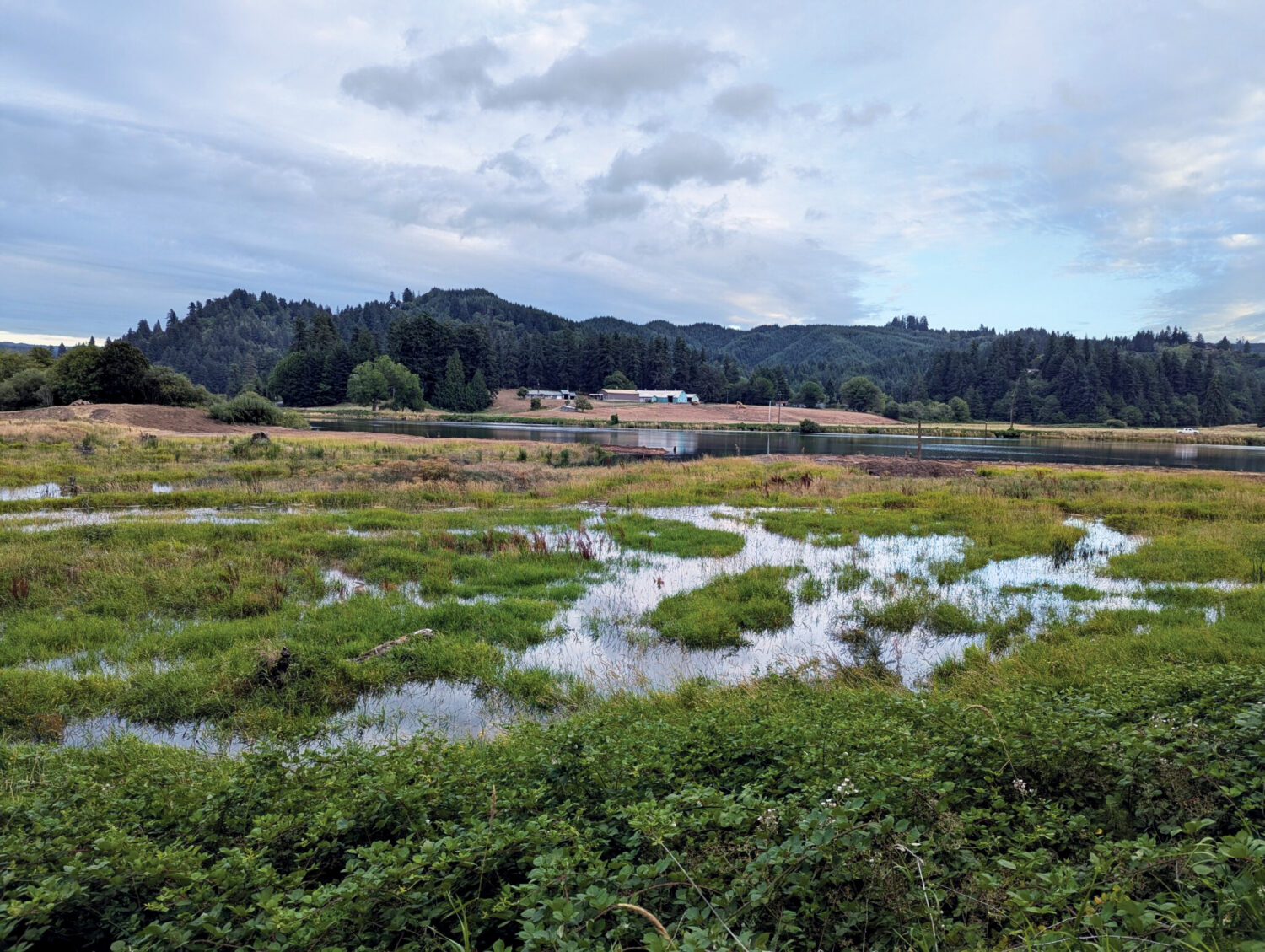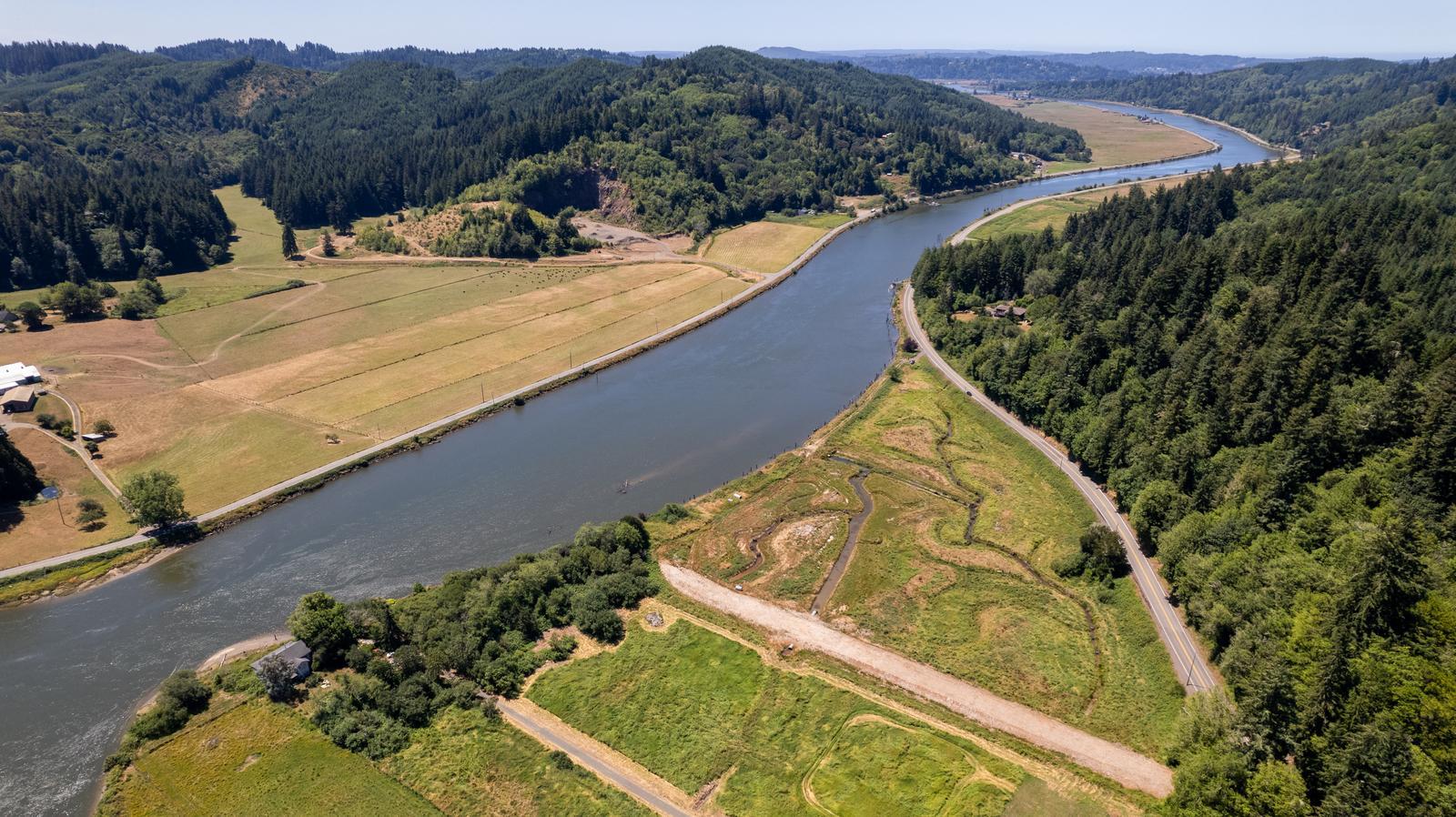Timber companies, Tribes, and our Coast Coho Partnership allies meet at a confluence, and get to work.
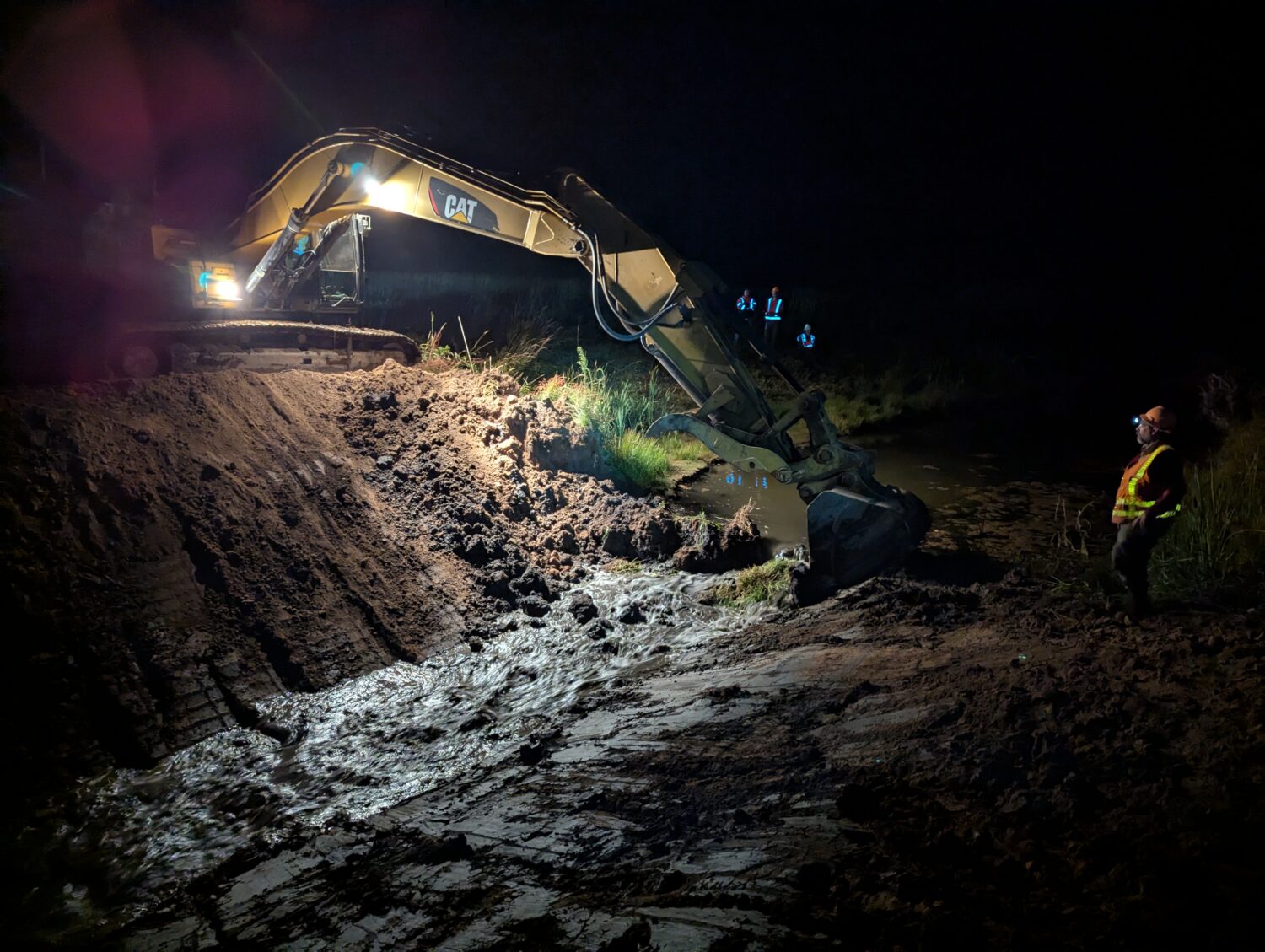
4 a.m. on August 2, 2025. Neap tides on the Oregon Coast are at their lowest ebb in months when excavators breach the levee.
Illuminated by floodlights, the heavy machines begin in the middle of the levee and work backward, scooping away the line of compacted fill above the subsided waters. For at least 75 years, this earthen wall on the Coos River has blocked tidewater from seeping into a triangle of pastureland—historically wetlands—just beyond.
Ed Cope could hardly believe that he was finally here, witnessing the start of a new chapter for the Coos Basin and its wild salmon. As the onsite project manager for the Millicoma Confluence Project—named for its location right below the merger of the South Fork Coos and Millicoma Rivers—this moment caps years of work by Cope and his colleagues at the Coos Watershed Association, a key partner in the Wild Salmon Center-led Coast Coho Partnership.
“This site is at what we refer to as an epicenter,” Cope says. “In winter, with coastal storms and king tides, a lot of water pumps through here. That’s why it’s really important that young fish can find calmer places like these wetlands to find food and refuge before heading out to sea.”
“In winter, with coastal storms and king tides, a lot of water pumps through here. That’s why it’s really important that young fish can find calmer places like these wetlands.”
Ed Cope, Plants Program Manager, Coos Watershed Association
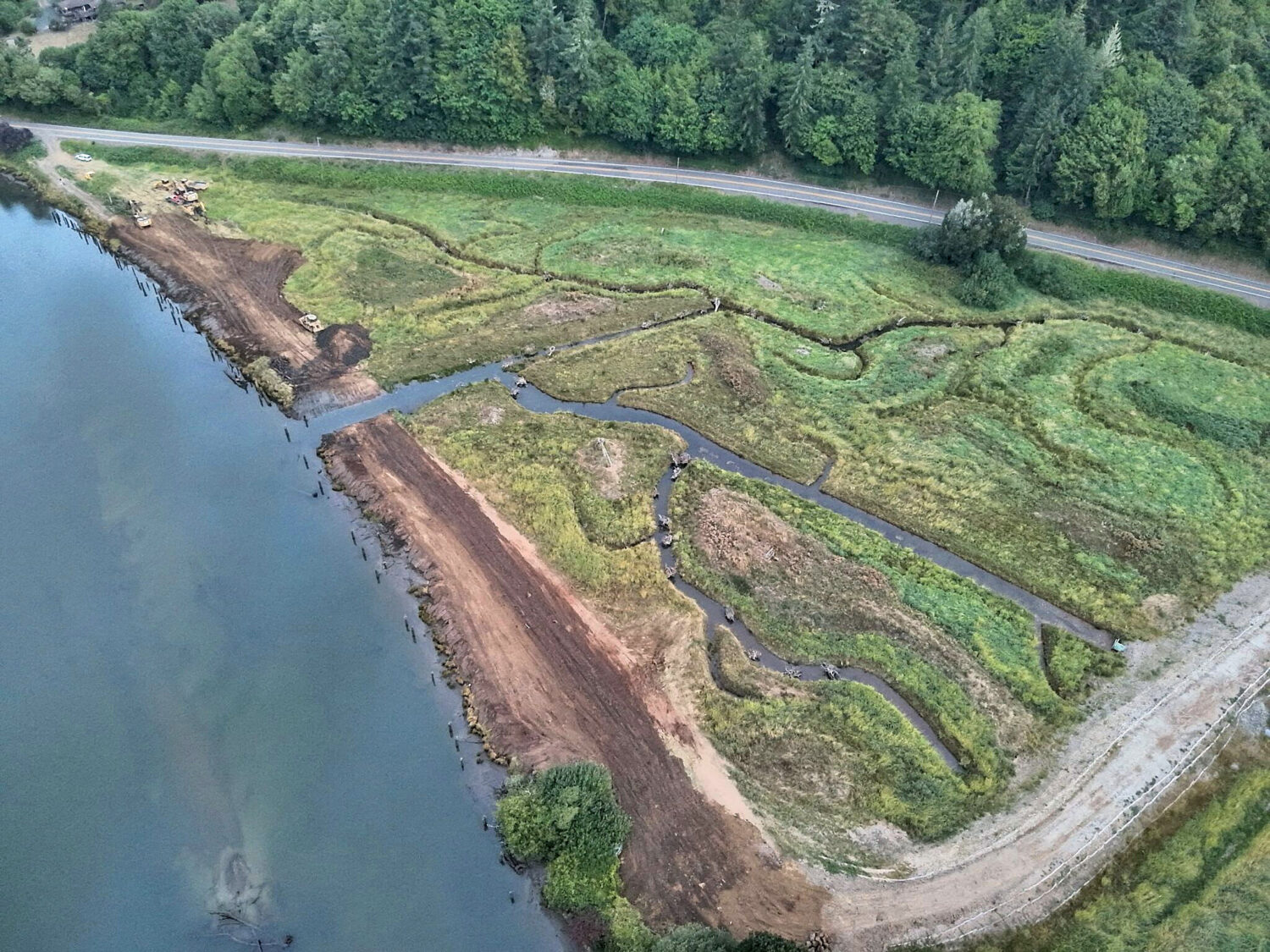
Across the Oregon Coast, restoration projects like this are picking up steam, accelerated in part by recent federal investments in the Coast Coho Partnership’s science-based action plans for salmon recovery. Each of these plans (nine and counting) target a key Oregon watershed, ranking projects within each that can deliver the greatest return on investment for wild salmon.
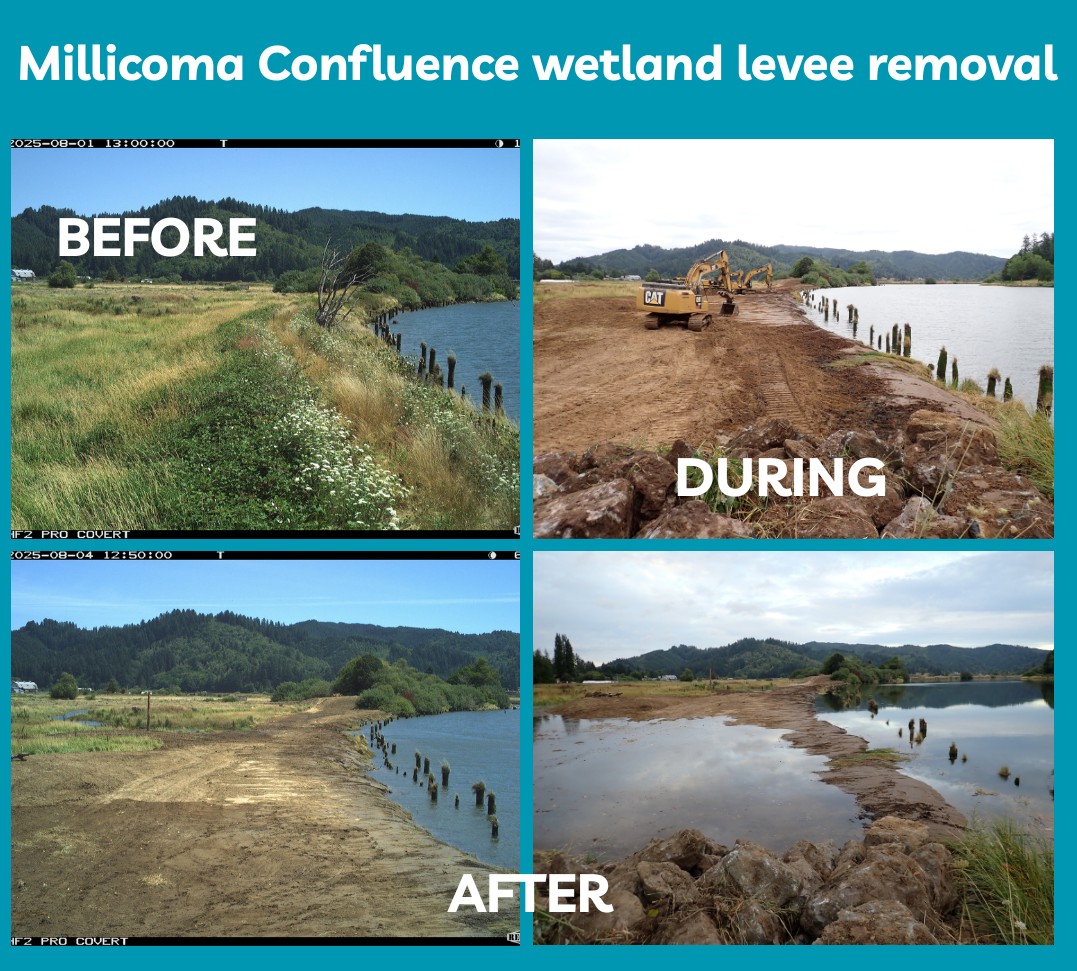
In the case of the Millicoma project, that investment starts with unlocking the nearly 11 acres of high quality habitat behind the excavators. Wetlands can be robust nurseries for young fish. Juvenile salmon who spend time rearing in these tidally-influenced coastal habitats grow larger and healthier before their ocean adventures. As a result, they enjoy higher survival rates into adulthood—all the way through to their later return to spawn in home streams.
By blocking off this haven next to a turbulent mainstem, the levee has made life harder for Coos Basin salmon for decades. It wasn’t built with fish in mind.
Decades ago, this property was purchased by timber company Weyerhauser to serve one purpose: to corral the massive logs that upland forestry workers once shunted down the South Fork Coos and Millicoma. From this staging area, logs were lashed into larger rafts and floated down to Coos Bay. As forestry practices shifted, the levee was built to convert the land into potential pasture—although this land was rarely, if ever, farmed.
“This is a parcel of property that Weyerhauser didn’t even know we still owned until about 2016,” says Jason Richardson, Weyerhauser’s area manager and the company engineer advising on the project. “It’s been so long since we did log drives.”
When this 10.8 acre parcel came to the attention of Richardson and his colleagues, they quickly saw it wasn’t an asset for Weyerhauser. Railroads and other forms of transport had of course replaced log drives long ago. But there was a further issue. In their assessment, Richardson’s team realized that the levee’s aging tidegate was failing, putting nearby homes at risk.
“Our number one goal was to work with our neighbors to save these homes from flooding,” Richardson says. “And we also saw the opportunity to restore the pasture to its former glory.”
“Our number one goal was to work with our neighbors to save these homes from flooding. We also saw the opportunity to restore the pasture to its former glory.”
Jason Richardson, Area Manager, Weyerhauser
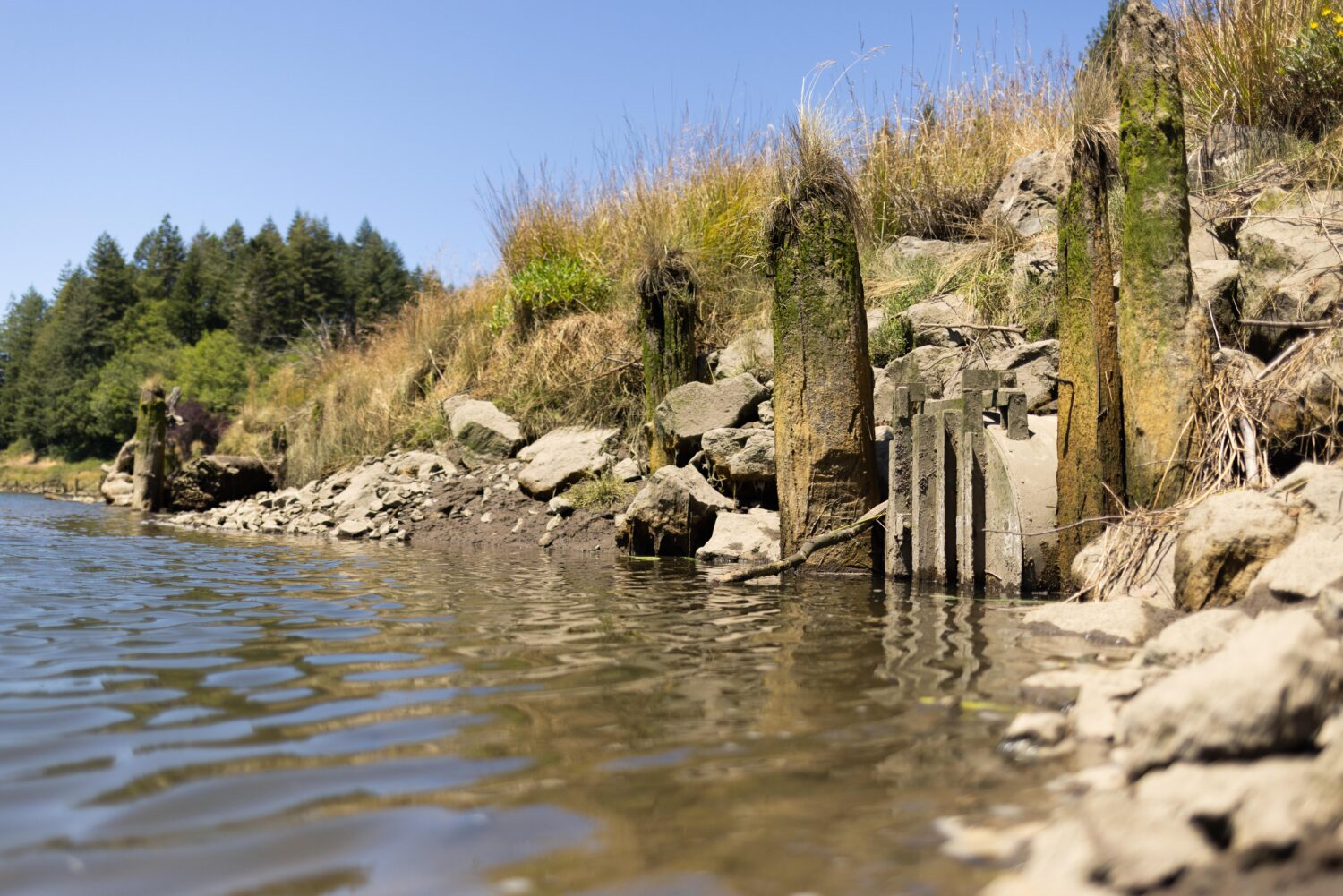
Weyerhauser, a member of the Coos Basin Coho Partnership (a local chapter of our Coast Coho Partnership), contacted the Coos Watershed Association. The association, in turn, reached out to Wild Salmon Center—which secured critical funds for the project from the NOAA Restoration Center and other funders—as well as the Wild Rivers Land Trust and the Confederated Tribes of Coos, Lower Umpqua, and Siuslaw Indians.
This level of collaboration makes sense, given the partnership’s ultimate vision for this once-forgotten pastureland. Even now, with the Millicoma wetlands still on the path to recovery, the partners are looking beyond—to a future in which this property is formally transferred to the Tribes, the original stewards of these lands and waters. That’s the larger story, says Wild Salmon Center Oregon Senior Habitat Restoration Manager Dr. Tim Elder—and one that’s been quietly unfolding here for some time.
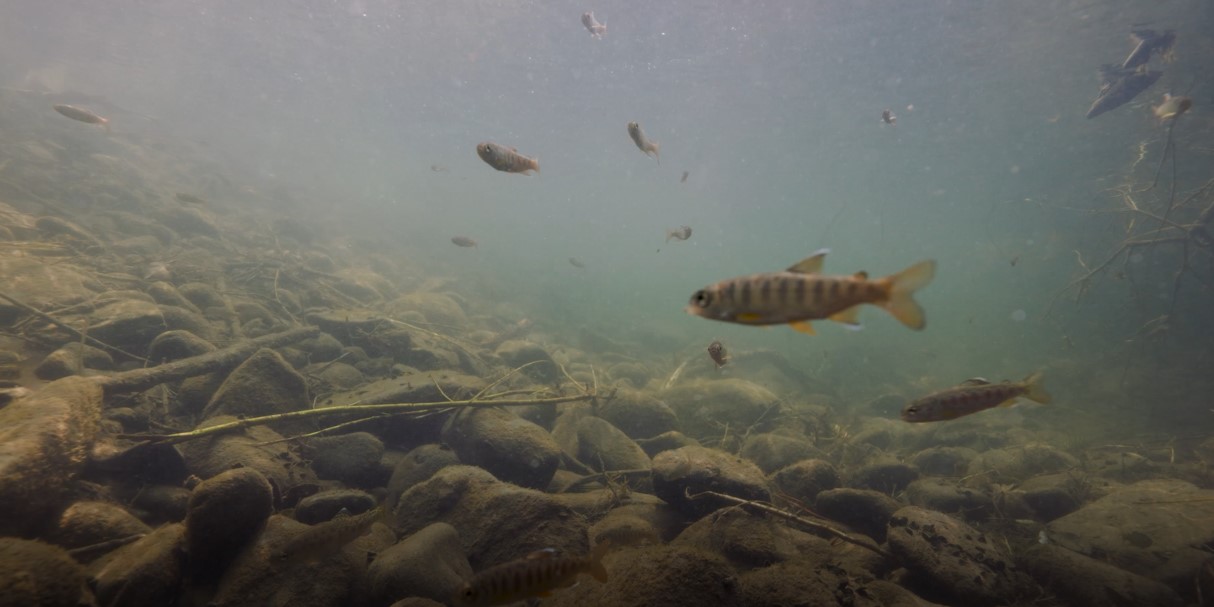
“The Millicoma Confluence Project is a perfect example of what’s going right for coho recovery in Oregon,” Dr. Elder says. “It’s the story of private companies, Tribes, and local conservation groups seeing opportunities, having conversations, and making big things happen. It’s a story we’re seeing more and more across the coast, because there are just so many great reasons to restore our salmon rivers back to health.”
Cope agrees. He’s ready for this tale to start taking shape—and he won’t have long to wait. The excavators have just hours to scoop their way back before rising tidewater begins to seep, for the first time in decades, back into this new, old wetland. And with it, the promise of coho salmon, a stronger community, and a landscape restored.
“The Millicoma Confluence Project is a perfect example of what’s going right for coho recovery in Oregon. It’s the story of private companies, Tribes, and local conservation groups making big things happen.”
Dr. Tim Elder, Senior Habitat Restoration Manager, Wild Salmon Center
